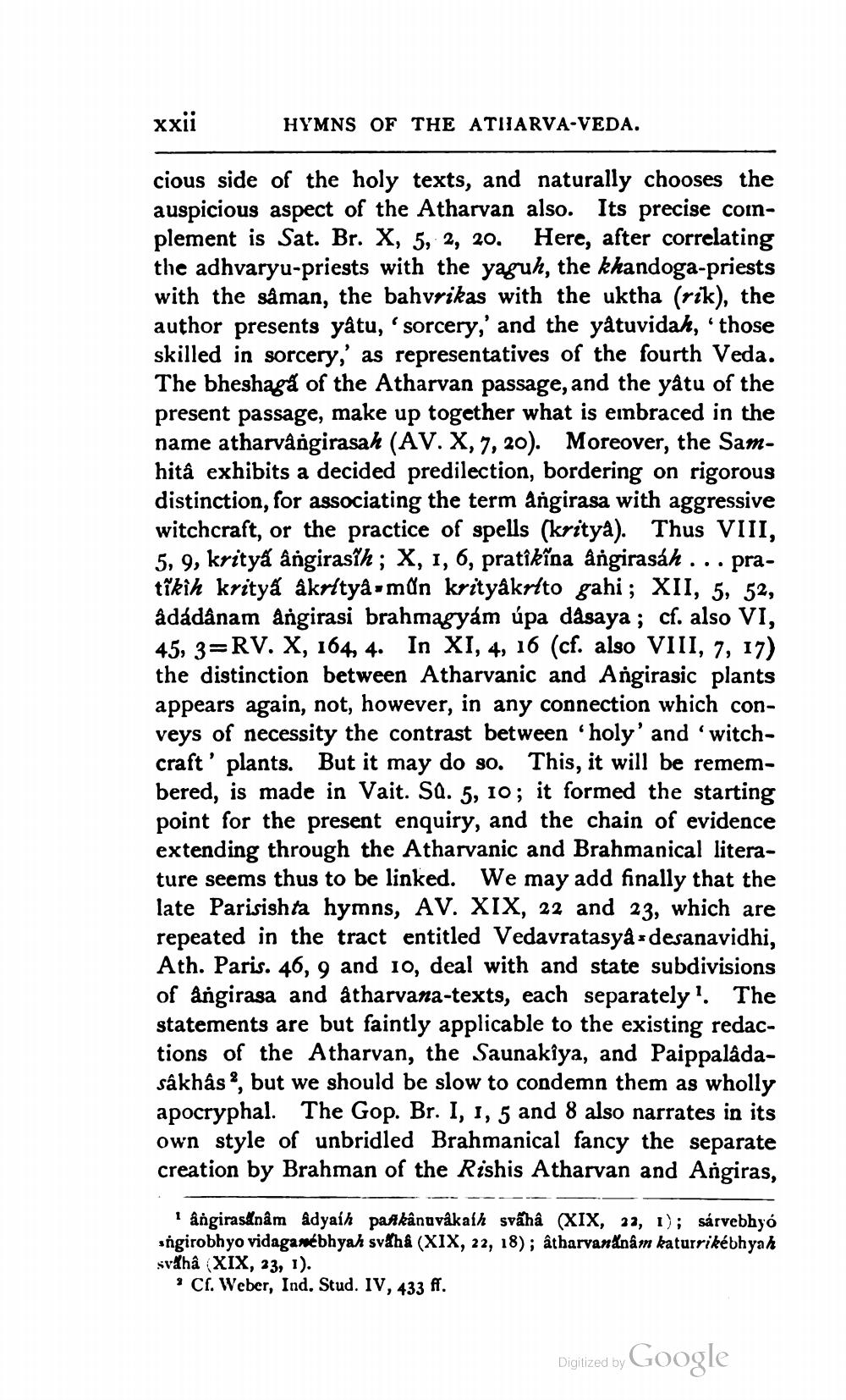________________
xxii
HYMNS OF THE ATHARVA-VEDA.
cious side of the holy texts, and naturally chooses the auspicious aspect of the Atharvan also. Its precise coinplement is Sat. Br. X, 5, 2, 20, Here, after correlating the adhvaryu-priests with the yaguh, the khandoga-priests with the saman, the bahvrikas with the uktha (rik), the author presents yâtu, 'sorcery,' and the yâtuvidah, those skilled in sorcery,' as representatives of the fourth Veda. The bheshaga of the Atharvan passage, and the yâtu of the present passage, make up together what is embraced in the name atharvangirasah (AV. X,7, 20). Moreover, the Samhitâ exhibits a decided predilection, bordering on rigorous distinction, for associating the term angirasa with aggressive witchcraft, or the practice of spells (krityà). Thus VIII, 5, 9, kritya ängirasih ; X, 1, 6, pratîkina ångirasáh ... pratikih kritya ákrltya-mấn krityâkrito gahi ; XII, 5, 52, ådádânam angirasi brahmagyám úpa dasaya ; cf. also VI, 45, 3=RV. X, 164, 4. In XI, 4, 16 (cf. also VIII, 7, 17) the distinction between Atharvanic and Angirasic plants appears again, not, however, in any connection which conveys of necessity the contrast between 'holy' and 'witchcraft' plants. But it may do so. This, it will be remembered, is made in Vait. SQ. 5, 10; it formed the starting point for the present enquiry, and the chain of evidence extending through the Atharvanic and Brahmanical literature seems thus to be linked. We may add finally that the late Parisishta hymns, AV. XIX, 22 and 23, which are repeated in the tract entitled Vedavratasya s desanavidhi, Ath. Paris. 46, 9 and 10, deal with and state subdivisions of angirasa and atharvana-texts, each separately? The statements are but faintly applicable to the existing redactions of the Atharvan, the Saunakiya, and Paippalâdasâkhâs?, but we should be slow to condemn them as wholly apocryphal. The Gop. Br. I, 1, 5 and 8 also narrates in its own style of unbridled Brahmanical fancy the separate creation by Brahman of the Rishis Atharvan and Angiras,
1 angiras&nam adyaih pankânuvakaih svâhâ (XIX, 22, 1); sárvebhyo sngirobhyo vidaganébhyah sváha (XIX, 22, 18); atharvandnam katurrikébhyah svdha (XIX, 23, 1).
Cf. Weber, Ind. Stud. IV, 433 ff.
Digized by Google
Digitized by




